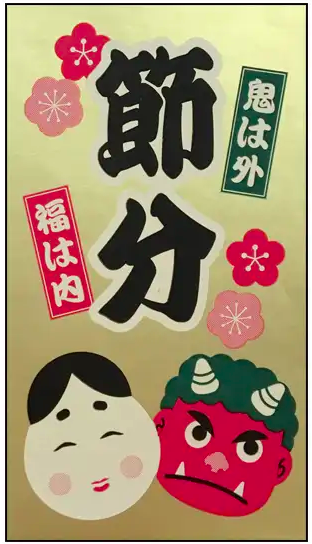
by Elizabeth Andoh | Jan 28, 2025 | Culture, Holiday, Kitchen PROJECTS, Winter
PROJECT Bean-Throwing for Setsubun Mamé maki (bean-throwing for Setsubun) tosses ogres outside (with dried beans) and brings good fortune inside (with dried beans). Fuku mamé (dry-roasted “good luck” soybeans) can be black or white (beige, really). FUKU wa...
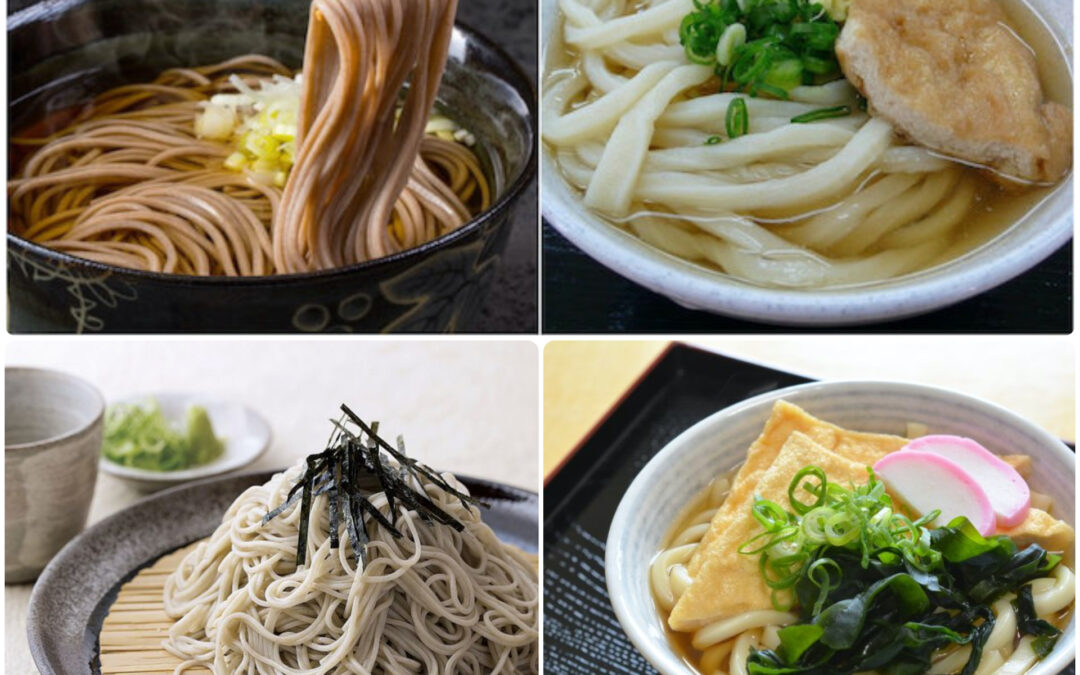
by Elizabeth Andoh | Dec 21, 2024 | Culture, Holiday, Kitchen Culture, Year-Round
Year-Passing SOBA… New Year-Welcoming UDON The Japanese bid farewell to the current year by slurping l-o-n-g noodles at midnight. Though most areas of Japan eat soba, calling the noodles toshi koshi (year-passing), those hailing from the Sanuki region eat udon....

by Elizabeth Andoh | Nov 19, 2024 | Autumn, Holiday, Kitchen Culture
In Japan, rice is more than just sustenance. It holds symbolic and sacred significance. Rice yield was also a measurement of wealth during the Edo Period (1603-1868). Early records of rituals celebrating the harvest and entreating future prosperity, called nii namé...

by Elizabeth Andoh | May 3, 2024 | Holiday, Kitchen Culture, Summer
So named because this sweet is wrapped in kashiwa (oak) leaves, kashiwa mochi 柏餅 is enjoyed during the Golden Week holidays, early in May. Historically this sweet is associated with Tango no Sekku (also known as Kodomo no Hi or Children’s Day). What’s the...
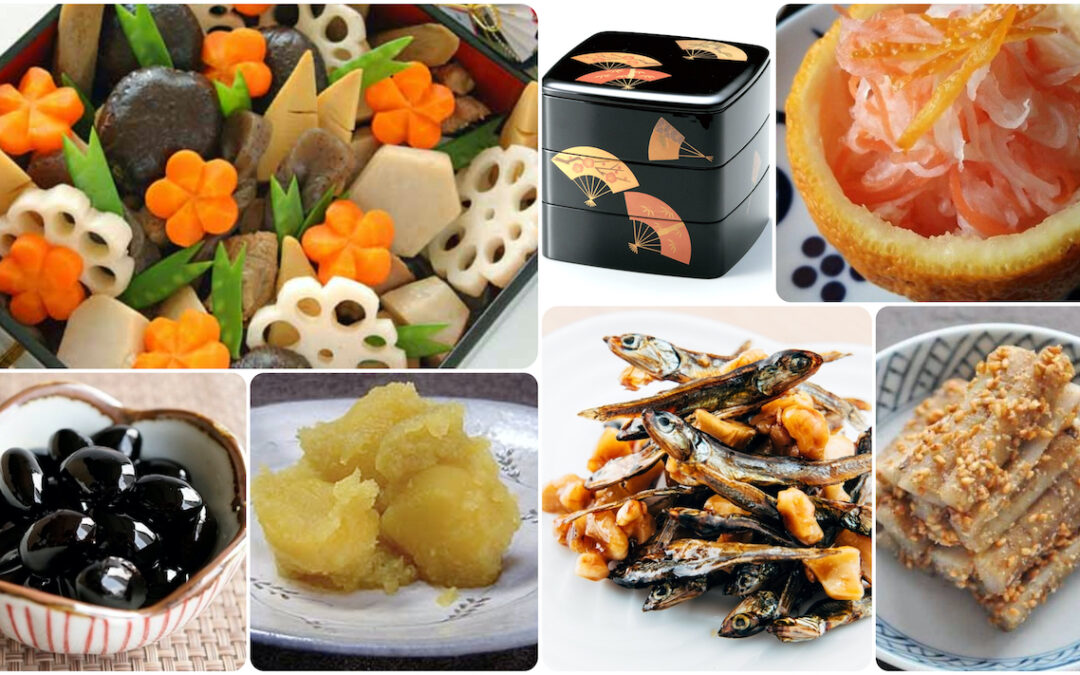
by Elizabeth Andoh | Dec 11, 2023 | Holiday, Kitchen PROJECTS, Winter
PROJECT Osechi-Making December is a busy time… The Japanese aptly call the final month of the year shiwasu, written with calligraphy for “professor” 師 and “running about in a tizzy” 走. In Japan shiwasu is a time of frenzied activity that...
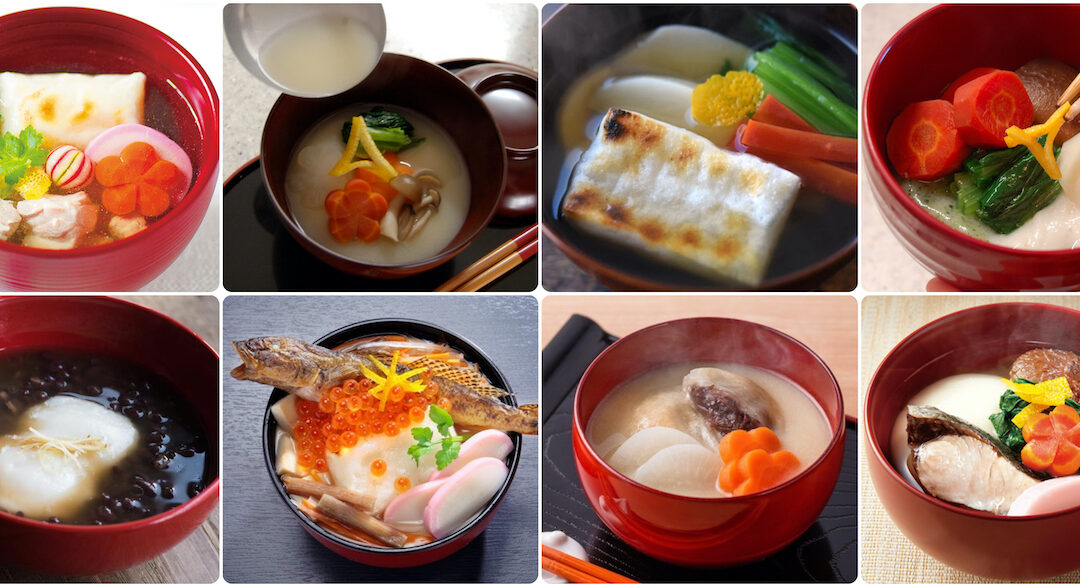
by Elizabeth Andoh | Dec 29, 2021 | Culture, Holiday, Kitchen PROJECTS, Winter
A sampling of REGIONAL OZŌNI Top row, from left: Kanto (Tokyo area) style, Kansai (Kyoto, Osaka) style, Kanto, KansaiBottom row, from left: Tottori with adzuki-jiru, Miyagi with whole grilled goby fish, Kagawa (Shikoku) with anko-filled mochi, Hakata with buri and...

by Elizabeth Andoh | Jan 24, 2021 | Culture, Holiday, Kitchen Culture, Spring, Winter
ONI wa SOTO FUKU wa UCHI Throw out the ogres! Bring in Good Fortune! 節分 SETSUBUN means “break between seasons” and such breaks occur many times during the year. However, today Japan celebrates the setsubun break that comes early in February and...

by Elizabeth Andoh | Dec 20, 2020 | Holiday, Kitchen Culture, Winter
田作り tazukuri ごまめ gomamé The names of many Japanese dishes employ word play; this is especially true of traditional holiday foods such as TAZUKURI. Written with calligraphy meaning “tilled fields” the fish brittle is a New Year delicacy that symbolizes fertility and...
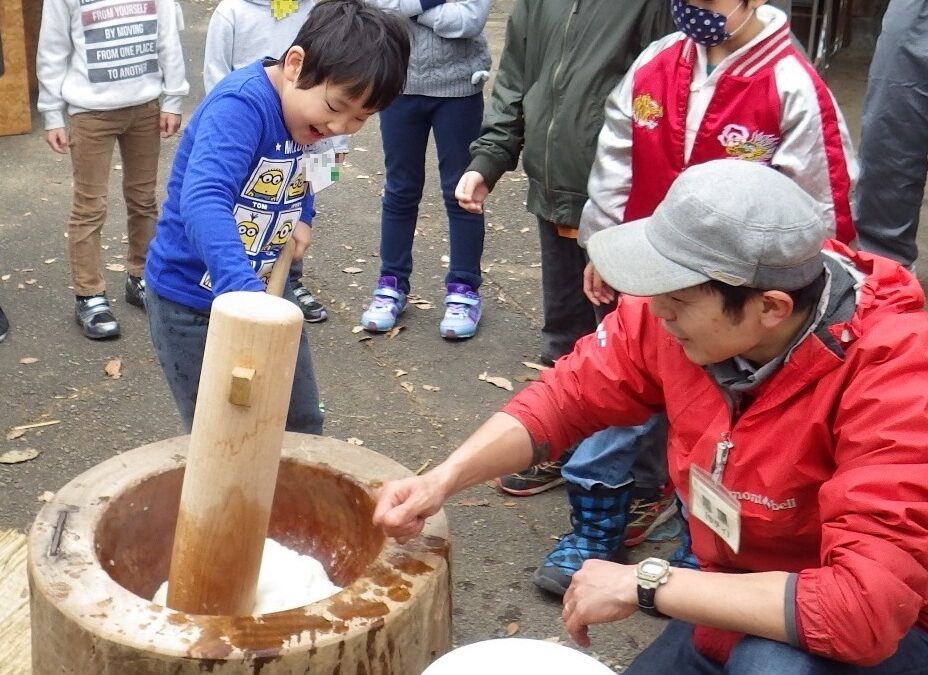
by Elizabeth Andoh | Dec 16, 2020 | Culture, Holiday, Kitchen Culture, Winter
Pounding Rice Taffy 餅つき MOCHI TSUKI MOCHI TSUKI… steamed mochi-gomé rice is pounded into a sticky, taffy-like mass. As the year comes to a close and preparations to welcome the new year are underway, communities throughout Japan organize rice-pounding events...
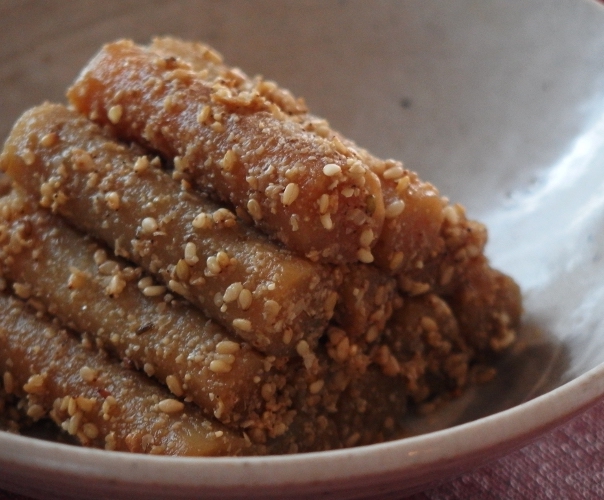
by Elizabeth Andoh | Dec 5, 2020 | Holiday, Kitchen Culture, Winter
Tataki Gobō叩き牛蒡 Smashed Burdock Root This dish takes its rather alarming name from the thwacking sound emitted when burdock root is tenderized with a blunt, heavy tool. In the traditional Japanese kitchen, this would have been a surikogi, the wooden pestle used in...

by Elizabeth Andoh | Feb 2, 2020 | Culture, Holiday, Kitchen Culture, Spring, Winter
FUKU wa UCHI ONI wa SOTO Bring in Good Fortune! Throw out the ogres! 節分 Setsubun, a marker on the ancient, lunar-based koyomi calendar indicates the start of a new season; setsubun breaks occur many times during the year. Today in Japan the...
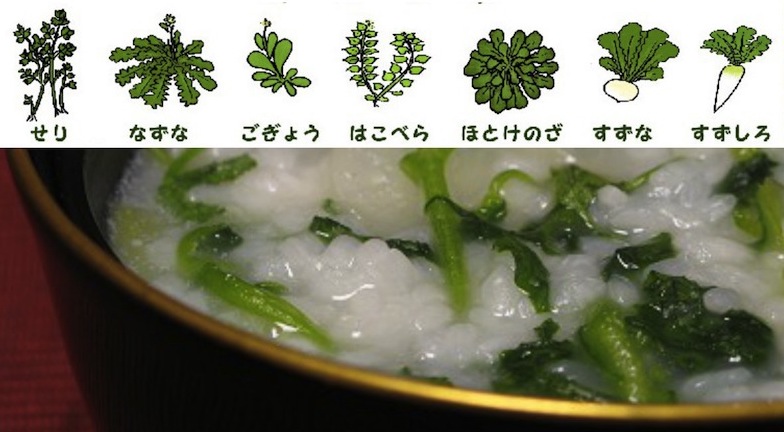
by Elizabeth Andoh | Jan 2, 2020 | Culture, Holiday, Kitchen Culture, Spring, Winter
From left to right, the seven spring herbs are: SERI, NAZUNA, GOGYŌ, HAKOBERA, HOTOKÉNOZA, SUZUNA, SUZUSHIRO 七草粥 Nana Kusa Kayu Rice Porridge with Seven Spring Herbs More than a thousand years ago, the Japanese spoke of watari-dori (“migrating birds”)...

by Elizabeth Andoh | Dec 22, 2019 | Culture, Holiday, Kitchen Culture, Winter
Kuri kinton sweet chestnuts in yam paste. KURI KINTON 栗金団 This traditional New Year’s sweet combines syrup-stewed chestnuts with a sweet paste made of mashed and sieved satsuma imo potato. The golden color of both the chestnuts and the potatoes are enhanced by...
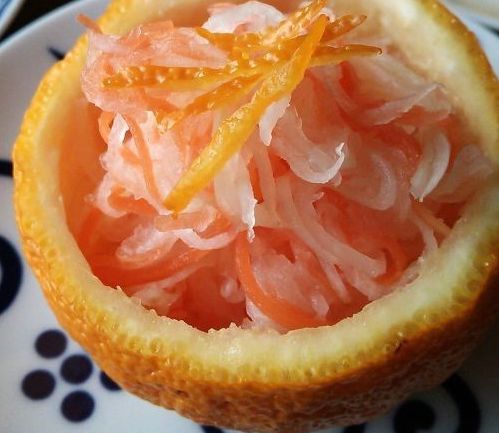
by Elizabeth Andoh | Dec 12, 2019 | Culture, Holiday, Kitchen Culture, Winter
Classic KOHAKU NAMASU, “red and white salad” is made from finely shredded daikon and carrots. Fruit peel is added after the vegetables have been salt-wilted and rinsed. The mixture is marinated in sweet-and-sour sauce for several hours to several days. Yuzu peel is...

by Elizabeth Andoh | Dec 2, 2019 | Culture, Holiday, Kitchen Culture, Winter
Glossy sugar-stewed black beans, a New Year’s treat. KURO MAMÉ black beans・earnest effort 黒豆・苦労+忠実 In the world of culinary endeavor, word-play can add a nuance of flavor to mealtime. Several of Japan’s osechi dishes served during the New Year holiday exemplify...
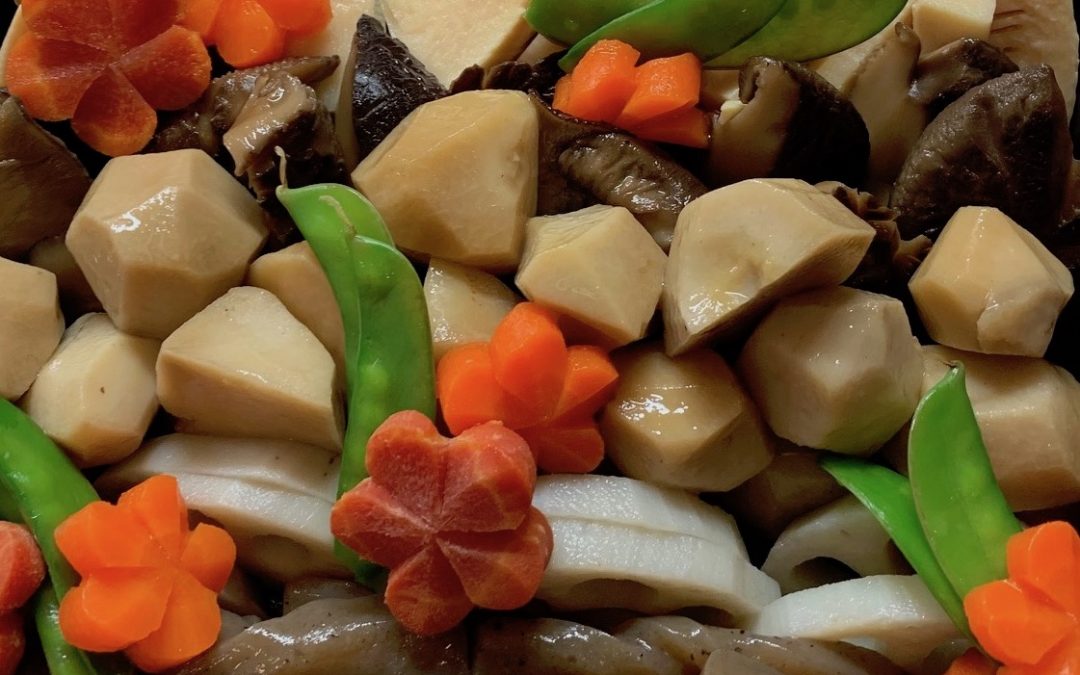
by Elizabeth Andoh | Nov 22, 2019 | Culture, Holiday, Kitchen Culture, Winter
In the nishimé assortment pictured here, lotus root, carrots and country potatoes have been simmered Kansai-style while dried shiitaké mushrooms and konnyaku braids have been prepared Kanto-style. NISHIMÉ・煮染め Hundreds of variations on this classic soy-simmered dish...

















